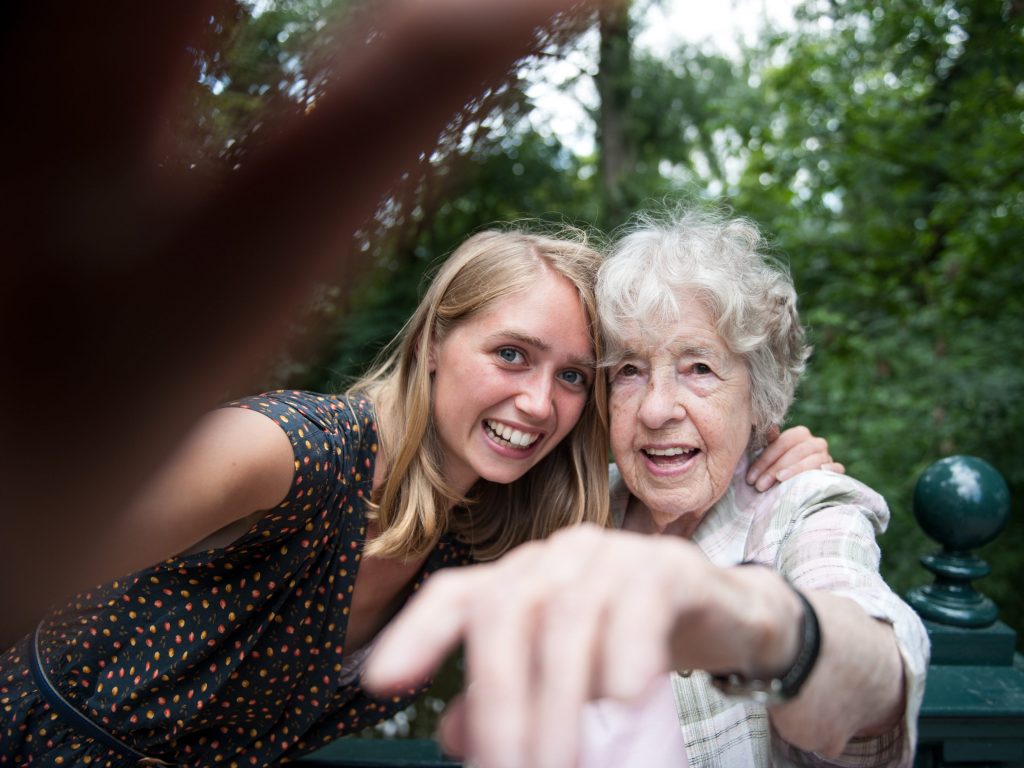- As affordable housing gets harder to find, many people have turned to roommates from all generations.
- The Washington Post reported on some multigenerational roommates who have found the arrangement fulfilling.
- Programs at universities are cropping up to facilitate housing arrangements between younger and older people.
A new kind of roommate dynamic is becoming more common.
It's the multigenerational kind: as Gen Z and millennials find it increasingly difficult to keep up with skyrocketing rent, more of them have begun to cohabitate with people closer in age to their grandparents.
Nadia Abdullah, 25, and a recent graduate of Tufts University, told The Washington Post's Cathy Free that her post-college apartment hunt was "a little frustrating because I couldn't find anything in my budget."
She had trouble finding an apartment in the Boston area after finishing school, where rents have surged over the past few years. Through the website Nesterly, a home-sharing agency that matches young adults with older homeowners with room to spare, Abdullah eventually connected with Judith Allonby, 64, an attorney from whom she now rents.
"It was perfect — Judith has become like my family," said Abdullah.
Nesterly doesn't have specific age guidelines about who can rent a space or host one, but its website encourages users to "create a mutually beneficial connection that ranges across generations, cultures and lived experiences."
Before meeting Abdullah through Nesterly, Allonby was debating whether she should move out of her family's home in Malden, Massachusetts, The Washington Post reported. She said that the upkeep seemed unmanageable for just herself. But living with Abdullah means she has help with housework, gardening, and groceries, which Abdullah offers in exchange for $700 a month in rent.
"It's really nice to have somebody else around, and Nadia brings a different atmosphere and energy than I had with my 88-year-old mother," Allonby said. "Nadia is definitely not listening to Frank Sinatra."
About 18 percent of Americans live in multigenerational households like Allonby and Abdullah's — households with two or more adult generations — according to Pew Research Center. The number of these households have quadrupled in the United States in the last five decades, with about 60 million US residents now living with adults who are of a different generation, according to Pew.
The Washington Post also highlighted that although some May-December roommate setups are unplanned, several North American universities actively foster such relationships as a part of their housing programs. At Drake University in Des Moines, Iowa, for instance, music students can opt to live rent-free at a local senior living center in exchange for performing regularly for residents.
In the last few years, Simon Fraser University in Canada launched an intergenerational housing program with Canada HomeShare, a program similar to Nesterly. Michael Wortis, 85, a retired physics professor, matched with Siobhan Ennis, 27, a graduate student, who is now his roommate, according to The Washington Post.
Ennis pays $400 a month in rent, they do chores together, and even have dinners and movie nights.
Although such living arrangements begin out of convenience for a lot of young adults, several shared that they opened up important connections with generations they might not have otherwise had such close contact with.
And research supports that: a Stanford University study from 2016 found that when older adults contribute mentorship and support to younger people, it creates a "sense of purpose" and generates benefits for both parties, such as fewer mental health problems and improved well-being.
"Michael is such a great person — I love having him as my roommate," Ennis said. "There is always something to talk about and he's always direct and thoughtful. We'll be friends for life."
Are you finding creative ways to live in an expensive housing market? Contact this reporter at [email protected].
